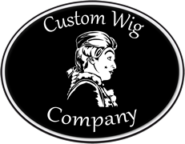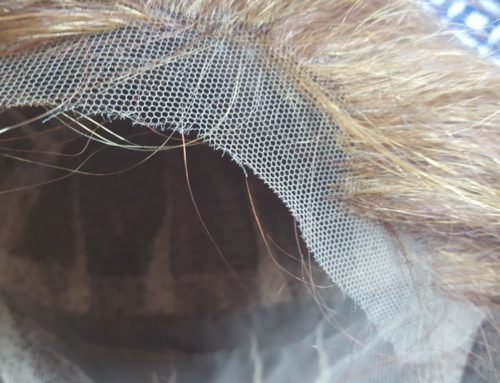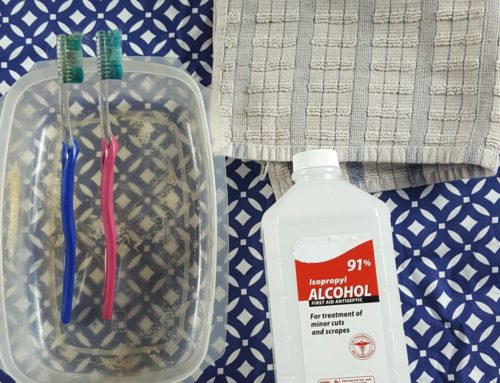You asked and we answered! Thanks for the great questions!
from @revwarbros
- “What historical period do you find the most difficult to style?”
This is a great question! Each of us here at Custom Wig Co has a different answer, so all of them are included.
From Heather – Finger waves. They’re not difficult, per se, but they take a long time and need to be really precise. Many of the techniques used during the teens, 20’s and 30’s to set and maintain finger waves aren’t immediately transferable to a wig. On the other hand, some techniques for finger waving wigs, such as using straight pins and twill tape, wouldn’t be very popular on an actual person’s head! From a non-historical area, I find excessively spiky or structured pieces challenging.
From Beth – For me, probably making a good, huge bouffant or victory rolls has been difficult. Take some practice and finesse.
From Hannah – I don’t have a specific answer—the most difficult period is one I haven’t done before, because I don’t know where the pitfalls are. Getting the proportions just right for styles across the 18th century is tricky.
From Amanda – Historical for me: 1980s, lol
Bonus question – “What’s your favorite style or historical era to recreate or work on?”
From Heather – 1790’s or 1940’s. I like big, soft styles that need a lot of roller setting to establish the style but then has to be combed and finessed into place.
From Amanda – weird sculptural cosplay wigs.
From Hannah – I don’t know whether I have a favorite either! Maybe 1830s, since they’re so wacky, or I love bustle hair as well. I also love making grungy adventure man hair.
From Beth – My favorite is anything to do with tiny braids and sausage curls. So satisfying! 1870’s has some great examples.
from @whitebrowed.creative
- “I’ve had a brief intro to ventilating in college, but what books/videos/other learning materials do you recommend for brand-new baby wig makers wanting to learn?”
To be honest, I don’t have any specific recommendations for books or videos. Many people find tutorials on YouTube, so that can be a good source. If possible, I recommend finding a wig maker to apprentice to. If that’s not an option, just dive in and start tying. You’ll learn a lot by doing that, even if things don’t come out the way you intend!
from @sewcialst_revolution
- “What’s the best shampoo to use on a human hair wig and do you use conditioner on it too?”
You can use any shampoo that is suitable for use on human hair to wash a wig. There are special wig shampoos out there but we just use drugstore brands. When shampooing a wig, you’re generally just trying to remove styling product, environmental dirt/dust and possibly perspiration, and those usually wash out easily.
If your wig or the hair it was made with was dyed as part of the building process, then use a shampoo and conditioner intended for color treated hair.
We use conditioner if the wig is human hair AND the hair is starting to feel dry or brittle or seems excessively tangled. Be sparing with conditioner, too much conditioner will make it harder for your wig to hold a style. A tiny dab is usually more than enough to put some moisture and resilience back into the hair. If a wig is really dry, then we might condition a little more intensely, but that’s not often necessary. It’s really important to make sure the conditioner is thoroughly rinsed out, otherwise the wig will be harder to style.
If you’re cleaning a synthetic wig, you can use human hair shampoo but you can also use laundry detergent. Instead of conditioner, use liquid fabric softener to smooth and detangle fibers.
from @butimnotastoner
- “What brand of hairspray/styling product do you recommend for wigs?”
Like the shampoo question, there’s not really an ideal brand or product line, most brands from the drugstore will work fine. Pick the lightest formula that will work for your styling needs and be sparing with its use. More product is generally just more build up on the wig. Be sure to choose an effective product for the styling you’re doing – for example, if you’re trying to create a 1940’s roller set, focus on a flexible gel you can apply to the damp hair before your roll it, rather than trying to secure the style with hairspray after the fact.
wig setting spray
We use a mix of water, gel and rubbing alcohol in a spray bottle as a setting gel. It’s applied lightly to a damp wig before roller setting. Once the wig is dry and styled, a bit of pomade or hairspray can be used to finish out the style. Pomade is great for achieving a smooth appearance, settling down flyaways and maintaining flexible hold. Think a lightly waxed mustache, finger waves, defined barrel curls. Hairspray should be used very sparingly but is helpful for fortifying areas of a style that need to be quite sturdy or stiff. Examples of that might be serious lift at the roots, 80’s style bangs, spiky anime wigs, some styles of mustache curl. When using product on a wig, remember that the product is going to build up until you wash the wig, so it’s best to be quite stingy with it and add more as needed.
notes on styling
In general, a style will hold better in human hair wigs if you use rollers on damp hair and a bit of heat to dry the wig. The combination of moisture evaporation and heat will do way more to set style than product applied later or than handheld heat tools.
If you’re doing historical styles, it can be fun and add more authenticity to the finished style to use styling techniques, tools and products from the era. LBCC Historical has a wonderful line of styling products and cosmetics created using historical recipes! Their pomade is wonderful for a wide range of styles AND it smells great!
styling synthetic wigs
For most synthetic wigs, most styling products won’t be very useful. It’s better to use steam to set curls or waves in synthetic hair than product. For stylized things like big spikes or large, sculptural styles, spray adhesive or glue sticks are actually great options. Obviously you shouldn’t use spray adhesive on a wig that you ever way to restyle. Some types of glue/glue sticks are water soluble, however, and can be used and then cleaned out of the hair. If you’re using a product that isn’t intended for hair, be sure to test it on the hair first to see how it will affect the hair and if it will wash out. And, of course, please be sure to follow any safety directions the manufacturer provides.
from @c.j.chezem
- “Where do you recommend a learning wig maker buy ventilating supplies?”
The supplies for a beginning wig maker are pretty much the same as those of an experienced wig maker – a hook holder, several sizes of hooks, hair and a selection wig fronting laces and foundation nets. Anyone can order from Banbury Postiche or the Wig Department and feel confident they’re going to get great products and excellent customer service!




Leave A Comment